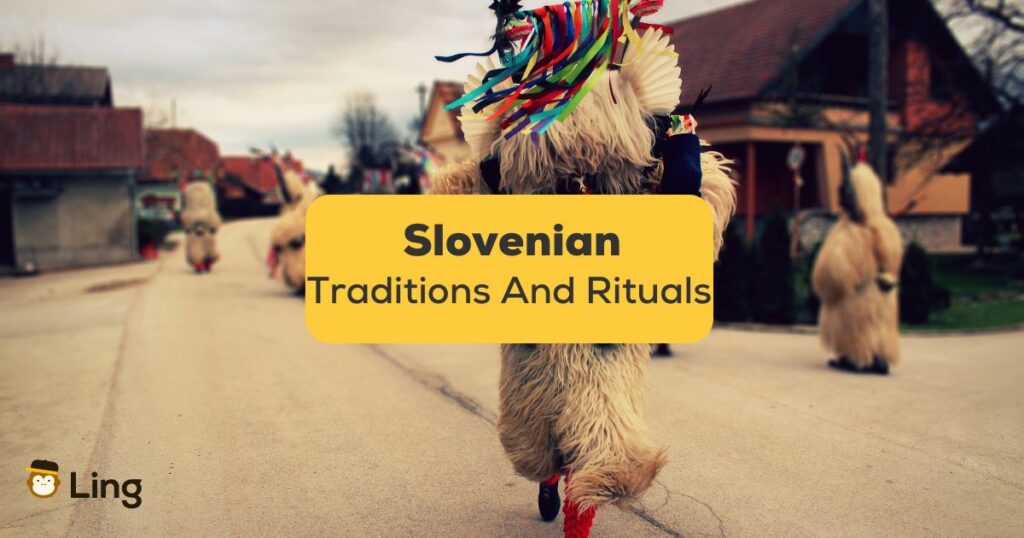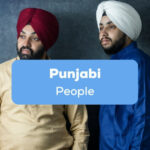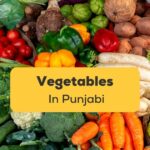Living in Slovenia is like a combination of Central European charm and rich Slavic traditions. Whether you’re considering a move to the country or already live there, understanding the culture and traditions can make your experience a lot better!
In this blog, you’ll get to know all Slovenia traditions and rituals that are unique to Slovenian society, as well as useful Slovenian vocabulary that will help you blend in with the locals.
Table Of Contents
Slovenia Traditions And Rituals
All Slovenian traditions and rituals come from history, the impact of different places, and, most of all, strong community ties. Since Slovenian roots are Slavic, you can expect some traditions to be somewhat similar to those from other Slavic countries.
A thing that also impacts Slovenian traditions is the country’s religion, especially Catholicism. This pretty much shapes most holidays and ceremonies. Family is a very important value as well, as lots of traditions are centered around getting together and spending quality time with loved ones.
Another thing that shapes Slovenia’s cultural heritage is its geographical diversity and historical influence. As a country in central Europe, it has been influenced by many different civilizations, some of those being the Romans, Celts, Slavs, Austro-Hungarians, and Mediterranean neighbors.
We can see this fusion of traditions reflected in everyday Slovenian life. Let’s have a look at some fun, quirky, and interesting traditions and rituals that Slovenians take part in each year!
Slovenian Easter Traditions
Easter is a very important Christian holiday and a very significant time in Slovenia. Slovenians have many different rituals during this time:
On Palm Sunday, you’ll see people carrying bundles or olive branches to church for blessings. These bundles are made from shrubs are greenery, and people often make them at home themselves.
Good Friday is a time of fasting, and there’s no Mass held on these days.
On Holy Saturday, fire and water are consecrated in the morning. Newly consecrated fire is brought home to purify the air in every room of the house. People carry Easter baskets filled with festive dishes to church to bless them.
In Slovenia, Easter Sunday is celebrated on the first Sunday after the first full moon following the vernal equinox. This usually places Easter between March 22nd and April 25th each year.
Another cherished tradition is the painting of hard-boiled eggs, known as pirhi. Children especially look forward to this because it involves decorating eggs with various colors and fun designs.

Kurentovanje Festival
Imagine a wild and colorful carnival that’s not just about fun but also has deep roots in Slovenian tradition. That’s the Kurentovanje festival in Slovenia!
This lively festival happens in Ptuj, Slovenia’s oldest city, but also in other cities across the country. Groups of people dressed up as the mythical creatures of Kurents, covered head to toe in sheepskin and wearing huge bells that jingle, stomp around with their wooden clubs. The noise is said to scare away winter and bring on spring!
Originally, Kurentovanje was a way to keep old customs alive, but now it’s a massive party with parades, music, and even other costumes joining in. It used to be that only men would put on these costumes, but today, men, kids, and even women rock the Kurent outfit. It’s all about celebrating the end of winter and the start of spring with a blast of noise and a ton of fun.
St. Gregory’s Day
St. Gregory’s Day is a charming Slovenian celebration that indicates the arrival of spring. Held on March 12th, it’s like Slovenia’s own Valentine’s Day, but with a twist: this is when birds supposedly get married!
For the young ones, St. Gregory’s Day is especially exciting. They make gregorčki models—tiny houses, boats, or other creations—with candles inside and launch them on rivers like the Gradaščica.
It’s a spectacle of light on water, symbolizing the longer days and the start of spring. This tradition is so cherished that it’s been safeguarded as part of Slovenia’s cultural heritage.
Bonfire Night (Kresovanje)
May 1st is Labour Day, and Slovenians celebrate it with bonfires. This event is called kresovanje, and is one of the most anticipated traditional events in Slovenia, attracting crowds of visitors from near and far.
It takes place on the evening before May 1st, when people gather to light bonfires across the country. This event offers a wonderful opportunity for socializing and entertainment for all generations.
The tradition dates back to pagan times when people believed the bonfires helped the sun shine brighter. Fern leaves were hung in homes to protect against fire, and wreaths made from plants like meadow flowers and St. John’s Wort were thought to ward off accidents and evil spirits.
Today, these traditions bring communities together to celebrate nature, history, and the changing seasons with warmth and joy.
St. Martin’s Day
St. Martin’s Day in Slovenia is all about celebrating the start of autumn’s wine season with joy and delicious Slovenian food. It happens every November 11th and continues for a couple of weeks, bringing together communities across Slovenia’s wine-growing regions.
The tradition goes way back to ancient times when Celtic festivals marked the end of harvest and the beginning of winemaking. St. Martin, a bishop with ties to Hungary and France, became the patron of this festive time.
The highlight of St. Martin’s Day is the tasting of young wine, freshly made from grape juice called must. It’s a time when vineyards and wineries open their doors to visitors eager to sip and enjoy the new vintage.
But the event is not just about wine—it’s also a feast! Tables are filled with roast goose or duck, served with mlinci (a special kind of flatbread), stewed red cabbage, and delightful traditional Slovenian desserts like pogača and potica.
Slovenia’s wine culture is deeply rooted, with vineyards spread across three main wine regions and producing wines like Karst Teran and Cviček, which are famous for their unique flavors.
During St. Martin’s Day celebrations, you can taste these wines almost everywhere in Slovenia—at restaurants, inns, and wine bars. It’s a wonderful time to explore Slovenia’s rich wine heritage, enjoy good company, and savor the flavors of autumn.
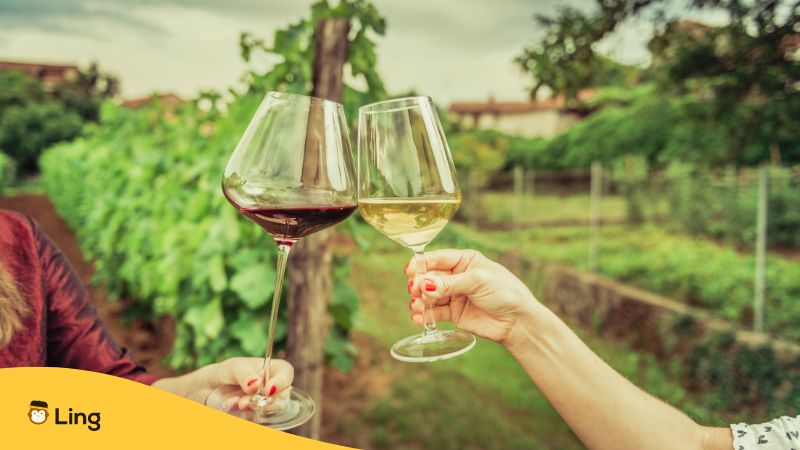
Christmas And New Year Traditions
Slovenian Christmas celebrations often include live nativity scenes, Advent wreaths, and a rich culinary tradition.
In Slovenia, Christmas and New Year bring a magical transformation, as towns and cities light up with festive decorations, creating a delightful atmosphere.
Strolling through the illuminated streets and bustling squares, you can enjoy local snacks, explore Christmas markets for unique arts and crafts, and join various events and concerts that are great for all ages!
Name Days
Slovenians, mostly Roman Catholic, continue the tradition of christening children, where the child is given a saint’s name chosen by the parents or godparent. Each saint has a specific date in the calendar, and individuals celebrate their Name Day on this date.
Historically, especially in rural areas, Name Days were celebrated instead of birthdays. Over time, they’ve become less significant and are now usually marked with a small gift from close family members.
The Day Of The Dead
In Slovenia, November 1st is the Day of the Dead. On this day, people honor those who have passed away by visiting cemeteries, lighting candles, and placing flowers on graves. Many also take the opportunity to visit family members they don’t often see.
Around midday, locals quietly go to the cemetery, and after the priest blesses the graves, families gather for a small meal. These traditions make the Day of the Dead one of Slovenia’s most significant family holidays.
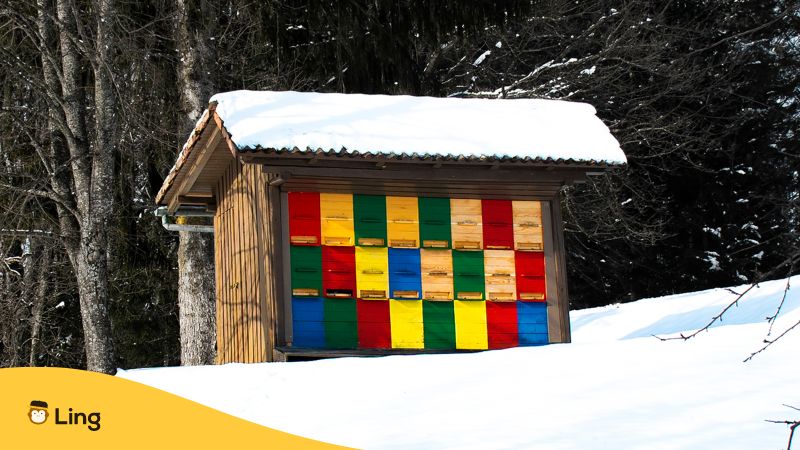
Beekeeping
Beekeeping is a cherished tradition in Slovenia, where there are about 5 beekeepers for every thousand people. The country is famous for its Carniolan honeybee, known for being gentle and hardworking. Slovenian beekeepers paint their beehive panels in bright colors and create beautiful outdoor art.
Slovenia produces a lot of honey, but locals love it so much that they still import more to meet demand. If you’re traveling in Slovenia, don’t forget to stop by the Apiculture Museum in Radovljca.
Prešeren Day
Prešeren Day, celebrated on February 8th, is a big deal in Slovenia, marking the death of the beloved national poet France Prešeren in 1849. It’s all about celebrating Slovenian culture and has been a public holiday since 1945 and a work-free day since 1991.
The festivities kick off on February 7th with the prestigious Prešeren Awards for cultural achievements. On the holiday itself, museums and galleries offer free entry, and there are cultural events going on. Slovenians everywhere celebrate the day with enthusiasm, honoring their culture and boosting national pride.
Folk Music
Slovenian folk music is very popular and attracts large crowds to festivals, celebrations, and community gatherings. The music is especially known for its use of the Accordion.
Famous groups like Avseniki and the Lojze Slak Ensemble have created well-known beloved songs. Slavko Avsenik is a key figure who composed over a thousand songs, including Na Golici, which happens to be the most played instrumental tune in the world!
The Avsenik brothers’ music, often performed in prestigious places, is a national treasure and represents the spirit and traditions of Slovenia. Their joyful polkas and heartfelt melodies continue to resonate with audiences worldwide.
Social Etiquette And Customs
All in all, Slovenians are friendly and welcoming, with a strong sense of community.
Slovenian tradition is to invite guests into their homes for coffee, wine, or traditional meals. They respect elders, authority, and traditions and often use titles and last names in formal settings.
When you meet someone, it’s polite to give a firm handshake and make direct eye contact. Close friends and family might greet each other with a kiss on the cheek or a hug.
They are proud of their national identity, history, and cultural heritage. This respect for tradition and community makes Slovenian culture special and Slovenia a welcoming place.
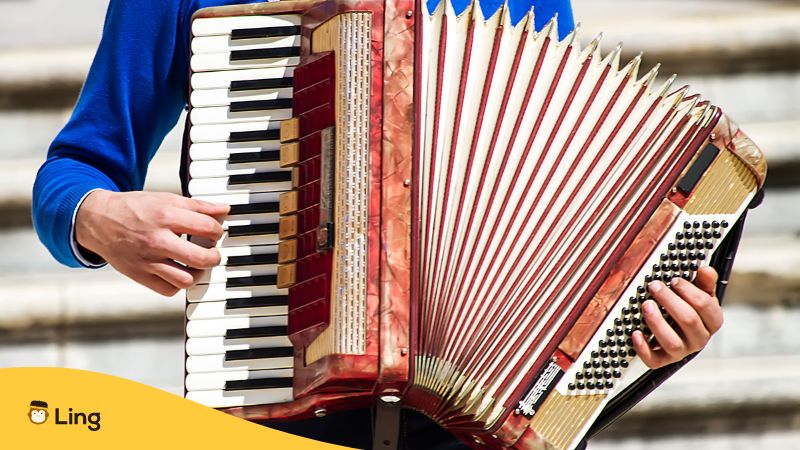
How Do You Say Tradition In Slovenian?
The Slovenian word for tradition is tradicija. The Slovenian word for ritual is obred.
Slovenian Vocabulary Related To Slovenian Traditions And Rituals
If you’re keen to learn about Slovenian traditions and rituals, then you might also want to know how to say these words in Slovenian. That’s why I’ve prepared some useful vocabulary related to this topic.
| English | Slovenian |
|---|---|
| Custom | Navada |
| Celebration | Praznovanje |
| Festival | Festival |
| Holiday | Praznik |
| Easter | Velika noč |
| Carnival | Pust |
| Harvest | Žetev |
| Bonfire | Kres |
| Christmas | Božič |
| Nativity scene | Jaslice |
| St. Martin’s Day | Martinovanje |
| St. Gregory’s Day | Gregorjevo |
| New Year | Novo leto |
| Beekeeping | Čebelarstvo |
| Easter egg | Pirhi |
| Beehive | Panj |
| Wine | Vino |
I’m sure you know by know that Slovenia’s official language is the Slovenian language. If you’re interested in Slovenian traditions, learning the language also seems like something you might want to do. That’s where the Ling app comes in, which is a great resource for anyone who’s just starting out learning a hard language and makes it fun and easy!
FAQs About Slovenian Traditions
What Is The Main Religion In Slovenia?
Most people in Slovenia are Christians, mainly Catholics, and that’s where lots of Slovenian traditions come from. There are also other Christian groups like Eastern Orthodoxy and Protestantism.
Islam, Judaism, and Hinduism are minority religions in Slovenia. Other than that, about 18% of the people identify as agnostic or atheist.
What Are Slovenians Known For?
Besides their hospitality, rich cultural heritage, love of nature, and strong sense of community, Slovenia has quite a few world class athletes. Here are some notable Slovenian athletes:
- Tina Maze – Alpine skiing, Olympic gold medalist, and multiple World Champion.
- Goran Dragić – Basketball, NBA player, and European Championship MVP.
- Peter Prevc – Ski jumping, multiple World Cup and World Championship medals.
- Primoz Roglič – Cycling, winner of multiple Grand Tour stages and World Championship silver medalist.
- Anže Kopitar – Ice hockey, NHL player, and Stanley Cup champion.
- Janja Garnbret – Sport climbing, multiple World Champion, and Olympic gold medalist.
- Luka Dončić – Basketball, NBA All-Star and Rookie of the Year.
What Is The Traditional Dress In Slovenia?
The Slovenian national costume, known as narodna noša, was created in the 19th century by combining styles from different regions into one unified look.
Today, the Gorenjska (Upper Carniola) folk costume is the most representative. You can see these outfits at festivals and cultural events across Slovenia.
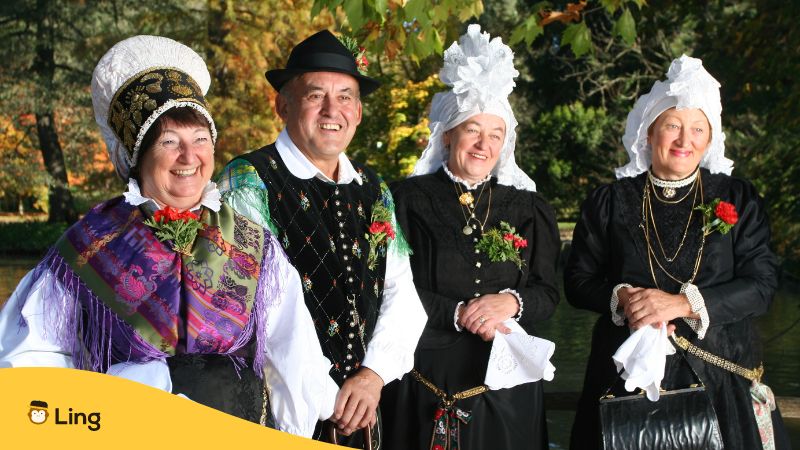
Prepare To Celebrate Slovenian Style!
Seeing some of these traditions first-hand might seem strange to some people who have never heard of them before. But for visiting or living in Slovenia, it’s a must to learn about them, as they’re what make the country unique and special!
So, get ready to dive into Slovenia’s unique traditions and rituals, where each celebration and festival is steeped in history, community spirit, and cultural pride.
